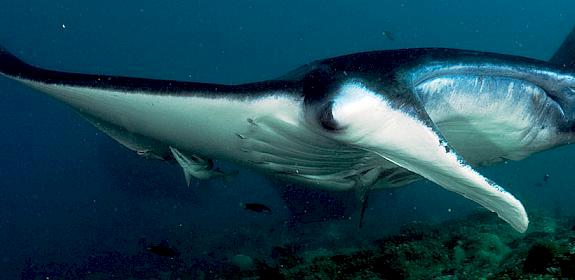Removal of trade controls signals bleak future for abalone
Cape Town, South Africa. 4th June 2010—TRAFFIC, the wildlife trade monitoring network, today expressed disappointment at the decision by the South African government to remove its endemic abalone species Haliotis midae from Appendix III of CITES, the Convention on International Trade in Endangered Species of Wild Fauna and Flora. Under the Appendix III listing, which came into effect on 3 May 2007, all consignments of H. midae in international trade were required to be accompanied by CITES permits from South Africa.

Markus Burgener, Senior Programme Officer for TRAFFIC, commented that the species, more commonly known as perlemoen, should only have been removed from the CITES Appendices if regulation of international trade was no longer required and it no longer faced trade related threats. “However, there are no indications that the very high levels of abalone poaching and associated illegal trade that led to the CITES listing of abalone in 2007 have been reduced. The decision to de-list the species appears to have been due to South Africa’s inability to address serious shortcomings in its implementation of the listing.”
An evaluation of the impact of the CITES listing, carried out by TRAFFIC in 2008 and 2009, revealed that in a number of key areas, the South African government was failing to implement the listing effectively and that these failures were very likely to have compromised its effectiveness. A key problem has been the inability by South Africa to ensure the endorsement of CITES permits by officials at ports of exit. “Endorsement of permits is a critical component of the enforcement process and this failure severely compromises the potential effectiveness of the permit system,” Burgener stressed. “It also has the potential to facilitate illegal trade through the re-use of non-endorsed permits.”
Another problem was inadequate awareness of the listing amongst neighbouring States through which poached abalone is laundered, and in the key importing countries. “South Africa depended on the assistance of these countries for the listing to be effective and should have ensured that all relevant departments in those countries were informed of the urgency of the issue and were provided with support for implementation,” Burgener said.
Burgener added that CITES was the only viable mechanism through which South Africa could secure support from other countries to address the very high volumes of illegal trade. “Removal of the CITES listing effectively puts South Africa back to the situation in the past where it has to tackle rampant and well-organized abalone poaching and illegal trade on its own. Such a decision is hard to understand for a wildlife product where almost all of the trade is international and where there are very high volumes of illegal trade. This is precisely the sort of international wildlife trade problem for which CITES was established.”
TRAFFIC is urging South Africa to examine any possible solutions to address problems it encountered implementing the CITES listing and reconsider listing abalone again in one of the CITES Appendices. “We hope that the authorities will work with industry, fishers, NGOs and other stakeholders to develop systems that can overcome any challenges faced in the past three years and ensure that any future trade controls can be well implemented and managed effectively.”
Notes:
Abalone is the common name used to describe the genus Haliotis. South Africa has five endemic species of abalone but only one species, (Haliotis midae) is commercially harvested. H. midae takes eight years to reach sexual maturity and approximately another four years for their shells to grow to the minimum diameter of 115 millimetres suitable for harvesting. Harvesting dates back about 6,000 years but it was not until the late 1960s that the resource began to be over-exploited as a result of demand as a delicacy in East Asian markets. Abalone for meat consumption is traded in live, frozen, canned and dried form but it is also sold as an aphrodisiac and its shells are sought after as ashtrays, soap holders and food platters. There is almost no domestic consumption of abalone in South Africa with over 95% of the catch being exported to Hong Kong, Mainland China, Japan, Malaysia, The Republic of Korea, the Philippines, Singapore and Taiwan.
The commercial abalone fishery dates back to the mid 1900s, with peak catches of nearly 3 000 tonnes in 1965. Abalone fetches the highest price for any seafood product harvested in South Africa and the commercial fishery has provided direct employment opportunities to hundreds of members of coastal communities. During the 2004/05 season, the industry supported approximately 300 holders of commercial fishing rights, not including support staff and their dependents. However, due to the decline in wild stocks, largely as a result of illegal harvesting, the total allowable catch (TAC) for abalone was reduced from 615 tonnes in 1995 to 125 tonnes for the 2006/7 season and 75 tonnes for the shortened 2007/8 season. In February 2008, South Africa took the unprecedented step of closing the fishery.



